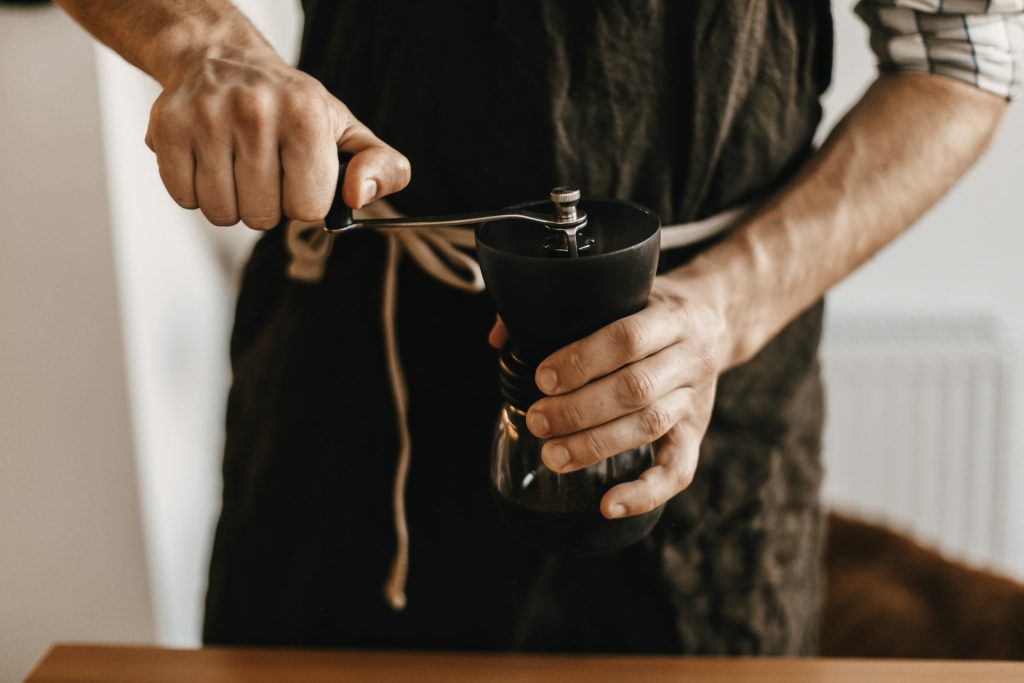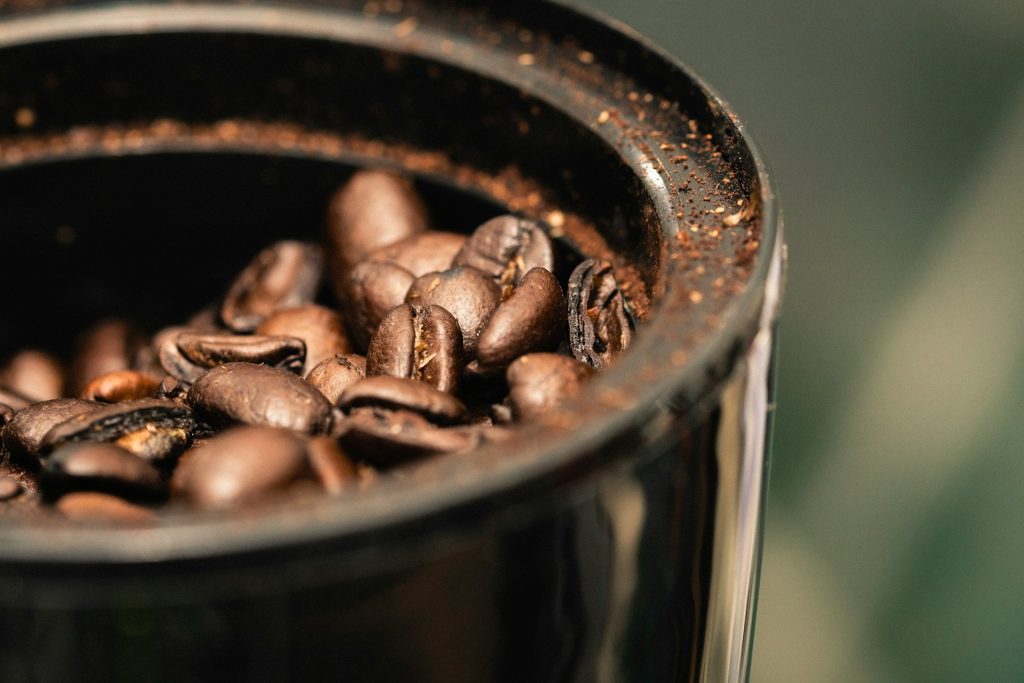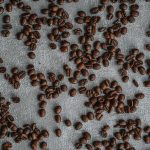Table of Contents
Imagine opening a bag of whole bean coffee, anticipating that first aromatic cup, only to find your grinder inoperable. Before panic sets in, know that there are ways to grind coffee beans without a grinder. With a bit of ingenuity, everyday kitchen tools can transform whole beans into the perfect grind for your espresso or French press coffee. This guide will reveal how to crush the beans and repeat the process to achieve the desired coarse or medium grind.
Whether you’re aiming for coarse grounds suitable for a French press or a medium grind for espresso machines, the methods described here will help you grind your beans effectively. From the simple mortar and pestle to more inventive techniques, you’ll learn how to blend the beans to the right consistency. Plus, we’ll share how to adjust your approach depending on whether you’re making coffee for espresso or pour over coffee.
Preface to Coffee Grinding Without a Grinder
There comes a day when you might need to grind your coffee beans but find yourself without a working grinder. This situation needn’t derail your coffee brewing process. This guide will show you how to grind your coffee beans using alternative tools found in most homes, ensuring that your whole-bean coffee doesn’t go to waste.
The Significance of Grinding Coffee Beans
Grinding coffee beans is an essential step in the coffee brewing process. It’s a physical change that transforms the beans from whole to ground, increasing the surface area and unlocking the potential for a full flavor extraction. The grinding process doesn’t alter the beans’ chemical composition, but it’s vital for preparing the beans to interact with hot water during the brewing process.
When grinding coffee beans without a grinder, the goal is to crush the beans to a consistency that suits your brewing method. Achieving the right grind size is crucial because it directly affects the flavor and strength of your coffee. Whether you’re grinding your beans for a robust espresso or a mellow French press coffee, the texture of the grounds plays a pivotal role.
Understanding Coffee Grind Sizes for Different Brew Methods
Different brewing methods require unique grind sizes to produce the best-flavored coffee. Espresso machines need a fine grind to ensure a strong, concentrated flavor, while French press coffee thrives with coarse grounds that allow for a slower extraction. Understanding the relationship between grind size and brewing method will help you craft the perfect cup of coffee, even without a grinder.
With a range of brewing methods comes various desired coffee ground textures. From the fine powder needed for espresso to the chunkier, medium-coarse grinds ideal for pour-over coffee, the size of the grind impacts the extraction rate and, consequently, the coffee’s taste. By learning to grind coffee beans without a grinder, you can tailor the grind to your preferred brewing process.

Mechanical Methods to Break Down Coffee Beans
Without a grinder, mechanical methods rescue to break down coffee beans. These methods utilize common kitchen appliances to grind the coffee beans into a suitable texture for brewing. While these alternatives may not offer the precision of a grinder, they can still produce a satisfactory grind for your coffee brewing needs.
Utilizing a Blender for Coffee Grinding
A blender can serve as a makeshift coffee mill when no grinder is available. To use a blender to grind coffee beans, add no more than a cup of beans and pulse in short bursts. This prevents the coffee grounds from becoming too fine or uneven. High-powered blenders can generate heat, which might alter the flavor of the coffee, so keep blending sessions brief, around 20 seconds, to avoid this issue.
The goal is to create coffee grounds of uniform size for a consistent brew. The blender’s shape can make achieving a consistent grind a challenge, so it’s important to tilt the blender from side to side to ensure all beans are reached. By carefully monitoring the process, you can produce grounds suitable for various coffee brewing methods, from espresso to pour-over coffee.
Employing a Food Processor as a Grinder
A food processor can be a helpful alternative to grind your coffee beans for a more even grind. Its wide bowl offers ample space for beans to move, resulting in a more consistent grind. Use short pulses for about 15 seconds to reach the ideal grind, stopping intermittently to scrape the sides and ensure even blending. This method is well-suited for pour-over coffee, producing a grind that’s neither too fine nor too coarse.
While the food processor won’t replicate the precision of a professional grinder, it can come close with proper technique. The key is to use small amounts of coffee beans and to pulse in short bursts, allowing for a controlled grind that can be adjusted to your preferred coarseness. If you’re aiming for a medium grind, the food processor can achieve it with patience and careful attention to the grinding process.
The Versatility of Hand Mincers and Garlic Presses
Hand mincers offer a unique way to grind coffee beans, especially when precision isn’t the main concern. By inserting beans into the mincer, you can manually crush them to a coarse consistency. Although the grind may not be as fine as other methods, it’s a viable option when other tools aren’t available. The process may need to be repeated to achieve the desired grind size.
Similarly, garlic presses can be repurposed to grind coffee beans in small quantities. While the holes in a garlic press may lead to coarser grinds, the process is straightforward and doesn’t require complex equipment. After the initial press, you may choose to regrind the coffee to ensure a more uniform texture. This manual effort is rewarded with freshly ground coffee, ready for brewing.
Manual Techniques to Crush Coffee Beans
Manual techniques to crush coffee beans come into play when mechanical options are unavailable or unsuitable. These methods rely on physical force and simple tools to break down the beans into grounds suitable for various brewing methods. While more labor-intensive, these techniques can be surprisingly effective.
The Traditional Approach: Mortar and Pestle
The mortar and pestle is a time-honored tool for grinding your beans. Begin by filling one-fourth of the mortar with beans and roll the pestle around in a circular motion to crush the beans. This method allows for control over the grind size, from finer grounds for drip coffee or Chemex to coarser grounds for French press coffee. Repeat the process in small batches for a consistent blend.
While the rolling pin method may produce larger quantities, using a mortar and pestle offers precision and a tactile connection to the grinding process. It’s ideal for those who appreciate the ritual of coffee preparation and don’t mind the extra effort. With patience and persistence, this traditional technique can yield grounds that enhance the flavors and aromas of your coffee.
Leveraging a Rolling Pin for Coffee Grinding
Using a rolling pin can be an effective way to achieve a finer grind compared to some electric appliances. Place the coffee beans in a ziploc bag, expelling the air before sealing to prevent stray beans from escaping. Crush the beans with the rolling pin, applying even pressure to create a consistent grind. This method is particularly useful for medium grinds that are suitable for standard coffee makers.
While the grinding process with a rolling pin may not yield the uniformity of a grinder, it’s a practical solution in a pinch. The key is to use steady, controlled movements to break down the beans, checking regularly for consistency. This hands-on approach may require some trial and error, but it can be quite satisfying to manually grind your coffee beans for your next brew.
When All Else Fails: Using a Hammer
If you’re left with no other options, a hammer can be used to grind coffee beans. Place the beans between sheets of parchment paper to prevent them from scattering, and gently smash the beans with the hammer. This rolling pin technique produces a coarse grind, which is suitable for methods like French press coffee that require a larger surface area for extraction.
Though this method may seem crude, it’s an effective last resort to prepare your coffee beans. Be careful not to apply too much force, as the goal is to crack the beans rather than pulverize them. With a little finesse, the hammer can turn whole beans into a usable grind for a satisfying cup of coffee.
Navigating Common Concerns and Questions
When it comes to coffee, aficionados often face a multitude of questions and concerns, especially regarding the grinding process without the convenience of a grinder. From achieving the right texture to understanding the nuances between whole bean and pre-ground coffee, there are several factors to consider when crafting the perfect cup.
Can You Achieve an Even Grind Without Electrical Appliances?
Grinding coffee beans without a grinder might seem daunting, but it is certainly possible to achieve an even grind with manual methods. Grinding the beans with a mortar and pestle allows for a more controlled process, ensuring that the beans are crushed to a consistent size. By using a circular motion, you can blend the beans into coarse grounds suitable for French press or slightly finer for drip coffee. Repeat the process until the desired texture is reached.
Another method involves using a blender. Although it doesn’t have a “grinder” setting, you can achieve a reasonable level of consistency by pulsing the beans into the blender. To prevent overheating, which can affect the flavor, tilt the blender slightly to mix the beans and pulse in short bursts. This method is less precise than a mortar and pestle but can be suitable for brewing methods like espresso, which require finer grounds.
The Pros and Cons of Whole Bean Coffee vs Pre-Ground
Opting for a bag of whole-bean coffee provides the freshest flavor, as grinding right before brewing preserves the beans’ essential oils and aroma, contributing to a more robust and satisfying coffee for espresso and other brewing methods. However, whole beans require additional effort and kitchen tools to grind, which might only be convenient for some coffee drinkers.
Pre-ground coffee, on the other hand, offers convenience and time savings. However, it may lack the freshness and nuanced flavors of freshly ground beans, as it’s hard to know how long the grounds have been sitting on the shelf. Moreover, once ground, coffee oxidizes faster, potentially leading to a stale taste if not used promptly.
How to Determine the Quantity of Coffee Beans to Grind
Determining the desired amount of coffee beans to grind depends on the brewing process and personal taste preferences. A good rule of thumb for a standard cup of coffee is to use about two tablespoons of coffee beans per six ounces of water. To ensure precision, you can use a kitchen scale or measure the beans by volume before grinding.
When using food processors or blade grinders, which are less consistent than burr grinders, it’s advisable to grind in small batches. Depending on the desired grind size, pulse the coffee beans in a blender for 3 seconds to 30 seconds, and check the consistency frequently. Using a freezer bag can help contain the mess and facilitate an even grind.
Adjusting Grind Size for Strength and Brew Method Preferences
The grind size of coffee is crucial for the brewing process, as it affects the extraction rate and, consequently, the taste and strength of the coffee. For example, cold brew coffee requires coarser grinds to ensure a smooth, less acidic flavor profile. In contrast, Turkish coffee necessitates a very fine grind to achieve its signature body and intensity.
Adjusting the grind size can be a matter of trial and error, especially when using manual grinding methods. Matching the grind size to the brewing method for optimal flavor extraction is essential. A coarser grind is typically better for slower brewing methods, while a finer grind is suitable for quicker extraction, like espresso machines.

The Relationship Between Grinding and Coffee Quality
The act of grinding coffee beans is more than just a preparatory step; it’s a pivotal factor that influences the overall quality of the cup. The grind’s size, consistency, and freshness all play a role in the brewing process, affecting taste, aroma, and the coffee experience as a whole.
Why Freshly Ground Coffee Makes a Difference
Freshly ground coffee is favored for its superior flavor and aroma. Grinding coffee beans before brewing ensures that the volatile compounds responsible for coffee’s complex taste are preserved. This freshness translates to a more aromatic and flavorful cup, unlike pre-ground coffee, which may have lost some of its character due to oxidation.
Furthermore, freshly ground coffee allows for better control over the brewing process. The grind size can be tailored to the brewing method, ensuring optimal extraction and the best possible cup of coffee. Therefore, despite the convenience of pre-ground coffee, the benefits of grinding beans fresh are clear for those seeking a premium coffee experience.
The Science Behind Grinding: Physical Changes in Coffee Beans
Grinding coffee beans is a physical change, altering them from their whole form to various levels of fineness without changing their chemical composition. This physical transformation is essential for brewing, as it increases the surface area of the coffee, allowing water to extract flavors more efficiently during the brewing process.
Grinding beans that have been roasted softens their cell walls, making them more amenable to grinding. This process is purely physical and does not induce chemical alterations in the beans. Understanding these changes helps coffee enthusiasts appreciate the importance of the grind about coffee’s final taste and quality.
Wrapping Up Your Home Grinding Experience
As you step back from your kitchen counter, you can take pride in your resourcefulness. Grinding coffee beans without the aid of a grinder might seem daunting at first, but as you’ve discovered, it’s a challenge that can be met with a bit of ingenuity. The coffee grounds you’ve produced are your passport to a fresh cup, no matter the brew methods at your disposal. Whether you’ve used a rolling pin in a pinch or a mortar and pestle with care, you’ve learned that the journey toward a perfect cup of coffee can be as hands-on as you make it.

I’m Audrey, a dedicated mother of teenagers with an insatiable love for coffee. On BeanBrewLove.com, I intertwine my need for caffeine with reflections on life. Whether expressing a nostalgic sentiment or injecting a hint of sarcasm, my blog is a reservoir of coffee culture, brewing techniques, and global coffee reviews.




